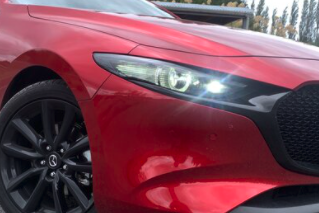Price: $51,995
Powertrain and economy: 2.0-litre four cylinder SkyActiv-X mild-hybrid petrol engine, 132kW/224Nm. Six-speed automatic transmission with Sport mode. Front-wheel drive. Combined fuel consumption 5.5 L/100km, CO2 127 grams/km.
Vital statistics: Length 4460mm, height 1435mm, width 1795mm, wheelbase 2725mm. Luggage space 295 litres. Wheels 18-inch black alloys, 215/45 R18 tyres.
We like: Revolutionary new engine combines spark and compression ignition; mild hybrid helps things along; beautiful interior, excellent levels of specification.
We don’t like: Those A-pillars; it’s early days yet, but CO2 emissions will still be too high.
THERE’S surely little doubt the Government will accept what is recommended in the Climate Change Commission’s interim report on how New Zealand can reduce its net carbon emissions to nil by 2050.
Realising this goal means that, amongst other things, it will adopt the recommendation to ban the importation of all fossil-fuelled light vehicles after 2032.
It’s a hard call, but the cold fact is that in order to achieve its emission reduction goals, our country has to do it.
Latest figures are for 2019. These show transport being responsible for 36.3 percent of all our emissions of long-lived gases, and that petrol and diesel-fuelled cars, SUVs and trucks were responsible for 91 percent of that.
Such emissions for that year were calculated to be 16.6 metric tonnes of CO2 equivalent (mt CO2-e).
The Climate Change Commission’s big report says this must be reduced to 8.8 mt CO2-e by 2035 if New Zealand is to meet its 2050 target.
The only way for New Zealand to do it, says the report, is to go big on electric vehicles. It suggests the EV share of our country’s light vehicle fleet must reach 18 percent by 2025, 40 percent by 2027, 60 percent by 2028, 80 percent by 2030, and reaching the 100 percent by 2032.






















